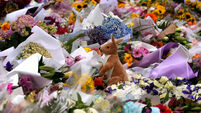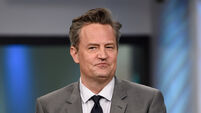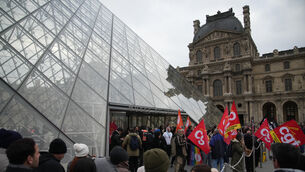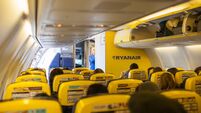No top Iraqis hit in Syrian attack - Rumsfeld
There is no evidence that senior Iraqi leaders were among those killed in an attack on a convoy last week near the Syrian border, US Defence Secretary Donald Rumsfeld said.
Initial news reports about the attack said Saddam Hussein or his sons, Uday and Qusay, were thought by US intelligence to have been in the convoy, which was destroyed by US air and ground forces, including an AC-130 gunship, helicopters and special operations troops.
Asked whether any senior Iraqis were killed, Mr Rumsfeld replied: “I have no reason to believe that.”
He said it was impossible to know whether some targeted people had escaped.
An undetermined number of people in the convoy were killed in the raid, which marked an escalation of the US hunt for top Iraqi leaders since a Saddam confidant was arrested last week.
US intelligence officials believe Saddam is probably alive and hiding in Iraq, and they are concerned that he remains a rallying symbol for anti-coalition resistance forces in parts of Iraq.
In Syria, there has been no official comment or reporting about the incident.
Unofficially, those close to the Syrian regime said there was unlikely to be any loud public complaint.
“Syria does not want a confrontation with the United States and realises that the situation is critical,” said Imad Fawzi Shueibi, a Syrian political analyst.
He said Syria was trying to build common ground with the US and will seek to downplay the border incident rather than inflame the situation by going public with its criticism.
Syrian UN Ambassador Mikhail Wehbe, responding to a question about the border incident, said:
“We’re not going to take this to the Security Council. We’re still trying to find out what happened.”
At a Pentagon news conference, Mr Rumsfeld and General Richard Myers, chairman of the Joint Chiefs of Staff, declined to provide substantial new details about the raid, which happened last Wednesday.
Mr Rumsfeld also used his news conference to offer a renewed defence of the Bush administration’s assertion that the US-led war on Iraq was justified by the threat posed by Iraqi weapons of mass destruction.
The administration’s position has come under increased attack at home and abroad as weeks go by without finding hard evidence of such weapons in postwar Iraq.
“I have every reason to believe that the intelligence that we were operating off was correct and that we will, in fact, find weapons or evidence of weapons programmes that are conclusive,” he said.
In responding to news conference questions about the raid near the Syrian border, neither Mr Rumsfeld nor Gen Myers would comment on who was targeted or why, or how the Syrians became involved.
They also would not discuss in detail the make-up of the US force that conducted the raid.
Other officials said it occurred along a known smuggling route near the western city of Qaim.
Mr Rumsfeld disputed suggestions there had been an unusual delay in providing a full accounting of the attack and its aftermath.
Sorting out the details was taking many days in part because “people were busy doing a variety of things”, including assessing which captives could be released and what kinds of equipment would be brought to the scene to investigate.
Gen Myers said US forces attacked the convoy in two parts – on a highway and in an unspecified compound. “I’m confident we had very good intelligence” about the convoy, he said.
Mr Rumsfeld would not discuss that intelligence. “There were reasons, good reasons to believe that the vehicles that were violating the curfew that existed in that area were doing it for reasons other than normal commerce,” he said without elaborating.
Five Syrian border guards were wounded – three later treated by US forces. It was unclear where they had been positioned.
Officials first said the guards had engaged in a firefight with US forces, but later said it was unclear whether they were hit in shooting with ground troops or by an air attack.
The US may have pursued part of the convoy across the border into Syria, one official said.














